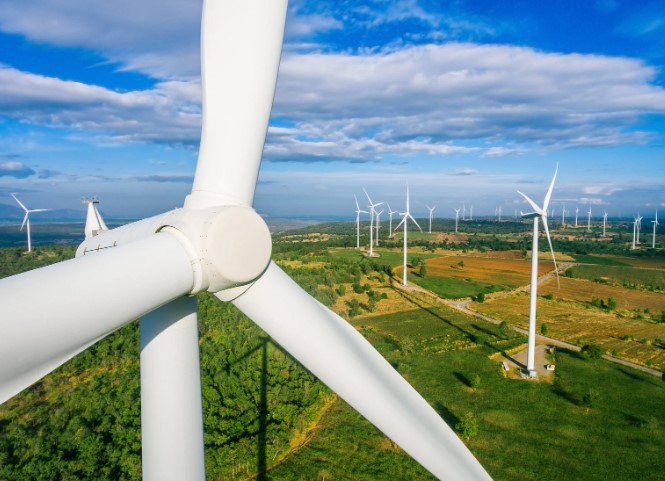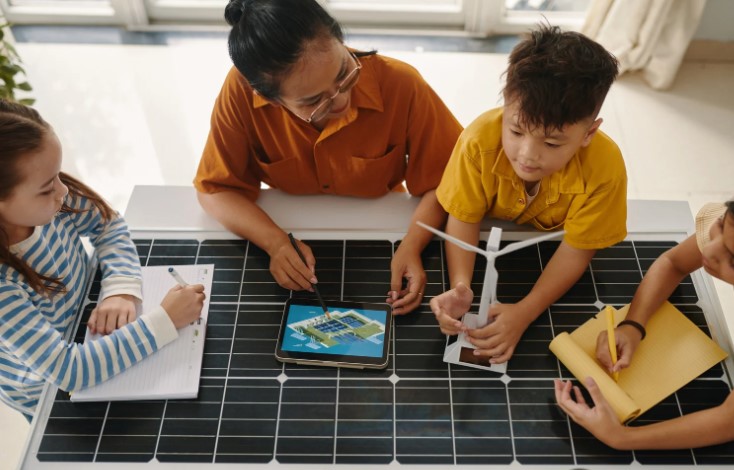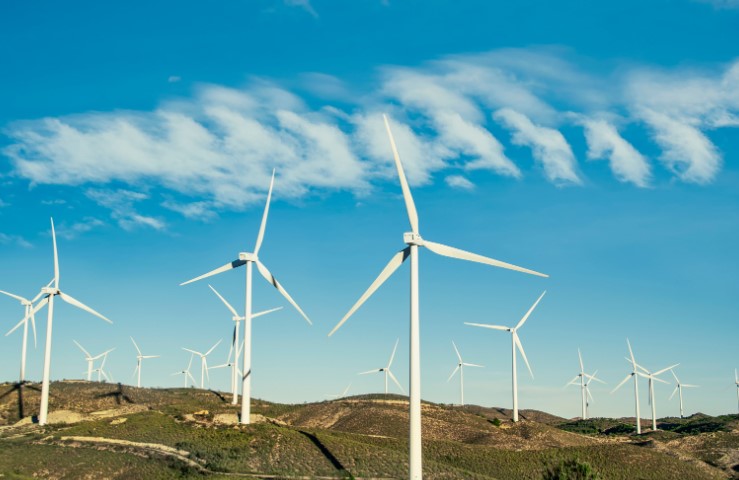- What Energy Store Does a Wind Turbine Use? A Simple Guide to Kinetic Energy
- What Is Kinetic Energy?
- How Does a Wind Turbine Use Kinetic Energy?
- What Are Energy Stores in Physics?
- Why Is Kinetic Energy Important in Renewable Energy?
- What Are Common Exam Questions About Energy Transfers?
- How Can You Remember the Energy Transfer Process?
- Summary Table: Energy Transfer in a Wind Turbine
- Conclusion: Why It Matters?
What Energy Store Does a Wind Turbine Use? A Simple Guide to Kinetic Energy
What Is the Missing Word in the Sentence?
“A wind turbine transfers energy from __________ energy store?”
This question is commonly found in KS3 and GCSE science assessments. It’s designed to test your understanding of how energy is transferred in real-world systems.
A Wind Turbine Transfers Energy From __________ Energy Store. What One Word Completes The Sentence?
Kinetic
A wind turbine transfers energy from the kinetic energy store of moving air. As wind travels across the blades, its motion is captured and converted into electrical energy.
This transformation of energy is a practical example of energy transfer that you might study in school or come across in science quizzes.

What Is Kinetic Energy?
Kinetic energy is the energy where an object possesses because of its movement. The faster something moves, the more kinetic energy it has.
In physics, it’s one of the main types of energy stores and is essential in understanding how machines like wind turbines work.
What are the Examples of kinetic energy?
- A moving bicycle
- A football rolling across the ground
- A person running
- Wind flowing across a field
The key thing to remember is: no movement, no kinetic energy.
How Does a Wind Turbine Use Kinetic Energy?
Wind turbines are devices that convert the kinetic energy in moving air into electrical energy. This process involves a continuation of energy transfers.
Step-by-step explanation:
- Wind moves through the air – The moving air contains the energy called kinetic energy.
- Turbine blades spin – The kinetic energy is transferred to the rotating blades.
- Generator is powered – The spinning motion drives a generator, which produces electrical energy.
Each stage in this process involves the conversion of kinetic energy into a usable form. The final output — electricity — powers homes, schools, and businesses.
What Are Energy Stores in Physics?
In UK science education, energy is categorized into different types of energy stores. Understanding these helps us to explain how energy is transferred and transformed in various systems.
Table: Overview of Common Energy Stores
| Energy Store | Description | Example |
| Kinetic | Energy due to motion | A moving car |
| Thermal | Energy due to temperature | Boiling water |
| Chemical | Stored in fuel, food, or batteries | Petrol, sugar |
| Gravitational | Energy stored due to height | A ball at the top of a hill |
| Elastic | Energy stored in stretched or compressed objects | A stretched spring |
| Magnetic | Energy stored between magnets | Bar magnets |
| Electrostatic | Energy between electric charges | A balloon sticking to a wall |
| Nuclear | Energy stored in atomic nuclei | Nuclear power plant |
In the case of wind turbines, kinetic energy is the starting point, which is eventually transformed into electrical energy.

Why Is Kinetic Energy Important in Renewable Energy?
Kinetic energy plays an important role in how we create clean, renewable energy. Technologies that rely on movement in nature — like wind, water, and tides — all depend on kinetic energy to function.
What are the Systems that rely on kinetic energy?
- Wind turbines
- Hydroelectric dams
- Tidal energy generators
These systems are part of the solution to reducing carbon emissions and protecting the environment. By using the motion in nature, we avoid burning fossil fuels and make use of energy that is both clean and abundant.
What Are Common Exam Questions About Energy Transfers?
If you’re preparing for a KS3 or GCSE science exam, you’re likely to encounter questions about energy stores and transfers. Understanding kinetic energy is especially important when answering exam-style questions.
Sample questions:
- What energy store is involved in a moving object?
- A wind turbine transfers energy from __________ energy store.
- Describe the energy transfer that occurs in a wind turbine.
Answering tips:
- If the object is moving — always consider kinetic energy
- Consider at where the energy begins and where it ends
- Describe the full path of energy: from wind to electricity

How Can You Remember the Energy Transfer Process?
A useful way to remember the energy transfers in a wind turbine is to keep the process simple and logical. Here’s a revision-friendly list:
- Wind contains kinetic energy
- Turbine blades rotate & remains the kinetic energy moving
- Generator transforms that energy into electrical energy
This pattern — from natural motion to useful electricity — is a great example of how science works in real life.
Summary Table: Energy Transfer in a Wind Turbine
| Process | Energy Type | Description |
| Wind blowing | Kinetic | Energy due to movement of air |
| Blades spinning | Kinetic | Rotational movement stores energy |
| Generator operating | Electrical | Energy converted into usable electricity |
This simple process shows how we move energy from nature into our power systems.
Conclusion: Why It Matters?
The answer to the original question —
“A wind turbine transfers energy from __________ energy store? What one word completes the sentence?” — is clearly kinetic.
Understanding this is about more than just getting a question right on a science test. It helps us see how modern technologies use natural forces to power the world.
Every time a wind turbine spins, it’s taking the energy from moving air — from the kinetic energy store — and turning it into something we can use.
By learning how these systems work, we gain insight into physics, environmental science, and the technology shaping our future.
Related Article: An Electric Drill Has Energy in Its __________ Energy Store When It Is Rotating.


0 Comments